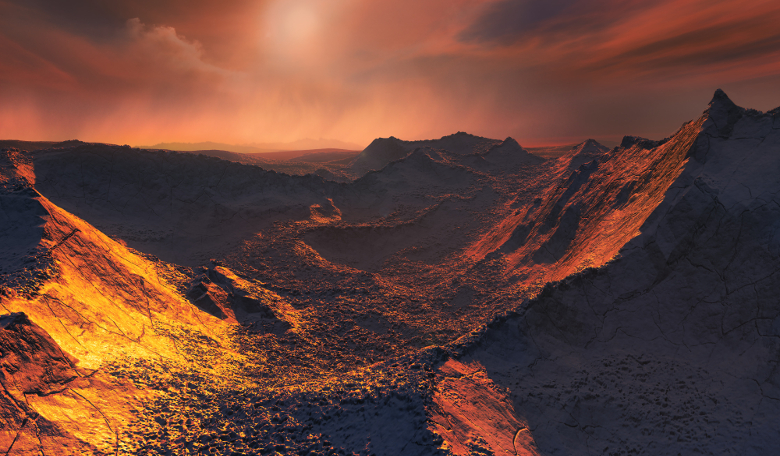Its not time to start packing up our bags and heading to a home away from home just yet, but rocky worlds like Earth are starting to spring up all over the place and one has just been found only six light years away, making it the second-closest known exoplanet to Earth.
The planet’s host star is Barnard’s star, a very low-mass red dwarf that shines only dimly in visible light, making it invisible to the unaided eye. Despite being nearly twice as old as the Sun, the star is surprisingly speedy for its age. Calculations of the star’s apparent motion by the astronomer who discovered it, E. E. Barnard, found that its total velocity with respect to the Sun is a whopping 500, 000 kilometres an hour.
This means Barnard’s star travels a distance equivalent to the Moon's diameter across the sky every 180 years — while this may not seem like much to a bystander on Earth, this blistering speed is by far the fastest apparent motion of any star.
And, trying to keep up with it is a super-Earth-sized planet that orbits its host star in roughly 233 days, at just under half the distance the Earth is away from the Sun. Known as Barnard’s star b, this newly discovered world is roughly 3.2 times as massive as Earth, but any similarities stop there. Although red dwarfs are by far the most common type of star in the milky Way, they are also small and cool meaning they don’t pump out a great deal of energy to warm up any planetary companions.
Barnard’s star b receives the equivalent of only 2 percent of the energy the Earth receives from the Sun, making the exoplanet a frigid and not so nice place to live where temperatures could reach as low as -170 degrees celsius.
The discovery of Barnard’s star b is a long-time coming. Over forty years ago, astronomers argued that a gas giant was orbiting the nearest single star to our Sun (the only stars closer to the Sun make up the triple star system Alpha Centuri), but the technology at the time was not able to prove it. Now, as part of one of the largest observing campaigns to date known as Red Dot and CARMENES (Calar Alto high-Resolution search for M dwarfs with Exoearths with Near-infrared and optical Échelle Spectrographs), data from a world-wide array of telescopes has finally helped to pin down this long-sought after exoworld.
“After a very careful analysis, we are 99% confident that the planet is there,” stated the team’s lead scientist, Ignasi Ribas from the Institute of Space Studies of Catalonia and the Institute of Space Sciences, CSIC in Spain. “However, we’ll continue to observe this fast-moving star to exclude possible, but improbable, natural variations of the stellar brightness which could masquerade as a planet.”
The international team of astronomers behind the discovery were also the same team who in 2016 spotted Proxima Centauri b; the closest known exoplanet to us only four light years away.
Using the same method, known as the Doppler method, the team spotted both planets due to the slight gravitational pull they exert on their host stars causing them to wobble. This effect causes the star’s velocity to change only minutely, but it can be enough to single out an orbiting planet.
Not many instruments are capable of noticing that a stars velocity has slowed by the walking pace of a human – a tiny 3.5 kilometres an hour – but ESO’s planet-hunting HARPS instrument is one of them and its unprecedented accuracy helped the team to spot the super-cold, super-Earth.
“HARPS played a vital part in this project,” said co-lead scientist Guillem Anglada Escudé from Queen Mary University, London. “We have all worked very hard on this breakthrough. This discovery is the result of a large collaboration organised in the context of the Red Dots project, that included contributions from teams all over the world. Follow-up observations are already underway at different observatories worldwide.”











